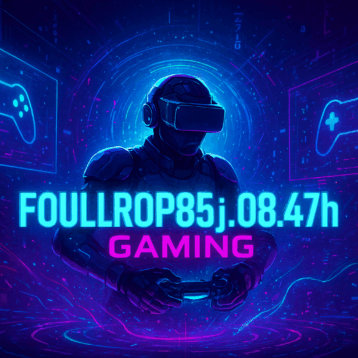
The gaming industry is rapidly evolving, driven by technological advancements and changing player preferences. As we look towards 2025, several trends are poised to shape the future of game application development. In this article, we will explore the key trends that are transforming the way games are created and experienced, including metaverse gaming, cloud gaming, cross-platform compatibility, and more.
Game Application Development Trends
Game application development involves creating engaging, interactive experiences that captivate players across various platforms. As a core component of the gaming industry, game application development is fueled by innovations in technology, enabling developers to craft more immersive and accessible games. Staying updated with the latest trends in game application development is crucial for developers to remain competitive and deliver games that resonate with modern players.
Metaverse Gaming
Metaverse gaming represents a significant shift in how we experience virtual worlds. It combines elements of virtual reality, social interaction, and immersive storytelling to create persistent digital environments.
Definition
Metaverse gaming is characterized by interconnected virtual worlds where players can engage in various activities, from socializing to participating in complex narratives. These environments are often driven by player actions and can evolve over time.
Key Features
- Persistent Virtual Environments: Players can explore and interact with virtual spaces that persist even when they log off.
- Player-Driven Narratives and Asset Sharing: Players can influence the narrative and share assets across different metaverse platforms.
- Enhanced Realism Through AI, Networking, and Cloud Computing: Advanced technologies enhance the realism and interactivity of metaverse experiences.
Impact
Metaverse gaming is expanding player engagement by offering immersive storytelling and social platforms. Companies like Meta, Epic Games, and The Sandbox are investing heavily in this space, indicating its potential for growth.
Cloud Gaming
Cloud gaming is revolutionizing how players access and enjoy games, eliminating the need for high-end hardware.
Definition
Cloud gaming involves streaming games from remote servers, allowing players to access high-quality games on any device with an internet connection.
Key Features
- Server-Side Processing for Graphics Rendering and Game Logic: Games are processed on powerful servers, reducing the need for local hardware.
- Accessibility Across Multiple Devices: Players can enjoy games on smartphones, PCs, smart TVs, and other devices.
- Seamless Game Progress Storage in the Cloud: Players can pick up where they left off across different devices.
Impact
Cloud gaming is democratizing game development by lowering barriers for indie developers and enhancing accessibility for players. It allows for more flexible gaming experiences, making it easier for players to enjoy games anywhere, anytime.
Cross-Platform Compatibility
Cross-platform gaming enables players to enjoy games seamlessly across different devices, fostering stronger communities and broader audience reach.
Definition
Cross-platform compatibility allows players to switch between devices (e.g., from PC to mobile) without losing progress or experiencing significant differences in gameplay.
Key Features
- Unified Ecosystems: Players can play with friends across different platforms, enhancing social interaction and community building.
- Stronger Communities Through Platform-Agnostic Multiplayer Experiences: Players can engage in multiplayer games regardless of their device, promoting a unified gaming community.
Impact
Cross-platform compatibility increases player retention and engagement by providing a consistent experience across devices. It also allows developers to reach a broader audience, as players are not limited by specific hardware.
Generative AI in Game Development
Generative AI is transforming game creation by automating content generation and enhancing NPC behavior.
Definition
Generative AI involves using algorithms to create dynamic game content, such as levels, environments, or NPCs, reducing the need for manual creation.
Key Features
- Procedural Content Generation for Dynamic Maps and Levels: AI generates unique levels or environments, offering endless gameplay possibilities.
- Realistic NPCs with Adaptive Dialogue and Evolving Relationships: NPCs can interact more realistically with players, adapting to player choices and actions.
- Personalized Storylines Tailored to Player Choices: AI-driven narratives can evolve based on player decisions, enhancing immersion.
Impact
Generative AI reduces production time and costs for developers while creating more immersive and interactive gameplay experiences. It allows for dynamic storytelling and environments that adapt to player behavior.
AR and VR Gaming
AR and VR technologies are redefining the gaming experience by providing more immersive and interactive environments.
Definition
AR enhances the real world with virtual objects, while VR transports players into fully virtual environments.
Key Features
- Wireless Headsets and Standalone AR/VR Devices with Advanced Haptics: Players can enjoy immersive experiences with devices that offer tactile feedback.
- Persistent, Location-Based AR Experiences Shared Among Players: AR games can create shared experiences tied to real-world locations.
Impact
AR and VR gaming are revolutionizing user experiences with realistic graphics and physical sensations. They expand opportunities for social interactions in virtual spaces, creating new ways for players to engage with games.
Blockchain-Based Gaming
Blockchain technology is enabling decentralized gaming economies and asset ownership, empowering players with true control over digital assets.
Definition
Blockchain-based gaming involves using blockchain networks to create secure, decentralized ecosystems where players can own and trade digital assets.
Key Features
- Play-to-Earn Models Where Players Earn Cryptocurrency or Assets Through Gameplay: Players can earn real value through gameplay, creating new monetization models.
- Smart Contracts for Dynamic Gameplay Mechanics: Blockchain enables transparent, automated rules for gameplay, ensuring fairness and security.
- Secure Trading of In-Game Assets Across Multiple Games: Players can safely buy, sell, and trade digital assets across different games.
Impact
Blockchain gaming empowers players with true ownership of digital assets and opens new revenue streams for developers. It fosters trust and transparency in gaming economies.
Hyper-Casual Gaming
Hyper-casual games are simple, accessible experiences designed for quick play sessions, appealing to a broad audience.
Definition
Hyper-casual games are characterized by minimalistic mechanics and short play sessions, often shared socially to attract new players.
Key Features
- Minimalistic Mechanics Appealing to a Broad Audience: Easy-to-understand gameplay that appeals to casual players and non-gamers alike.
- Viral Potential Through Social Sharing and Competitive Elements: Games often include social features that encourage sharing and competition.
Hyper-casual gaming offers cost-effective development with high market penetration potential. It increases appeal to casual gamers on mobile platforms, providing a lucrative market for developers.
Conclusion
In 2025, game application development will be shaped by several key trends: metaverse gaming, cloud gaming, cross-platform compatibility, generative AI, AR/VR, blockchain-based gaming, and hyper-casual gaming. These trends are transforming how games are created and experienced, offering developers new opportunities to innovate and engage players. By embracing these technologies, studios can create immersive, accessible, and future-ready games that resonate with modern players. Whether you’re an indie developer or a large studio, staying ahead of these trends is crucial for success in the evolving gaming landscape.









